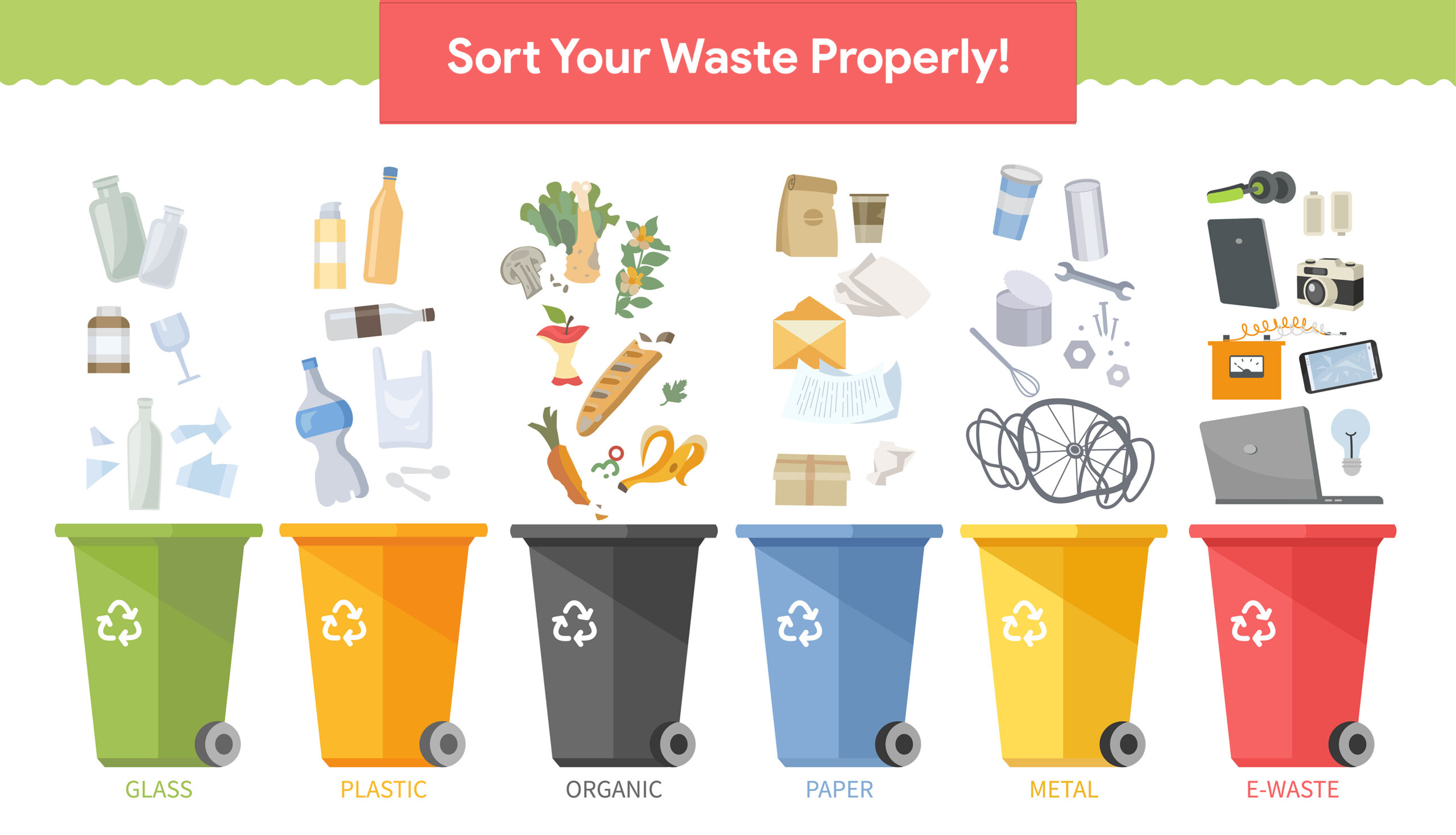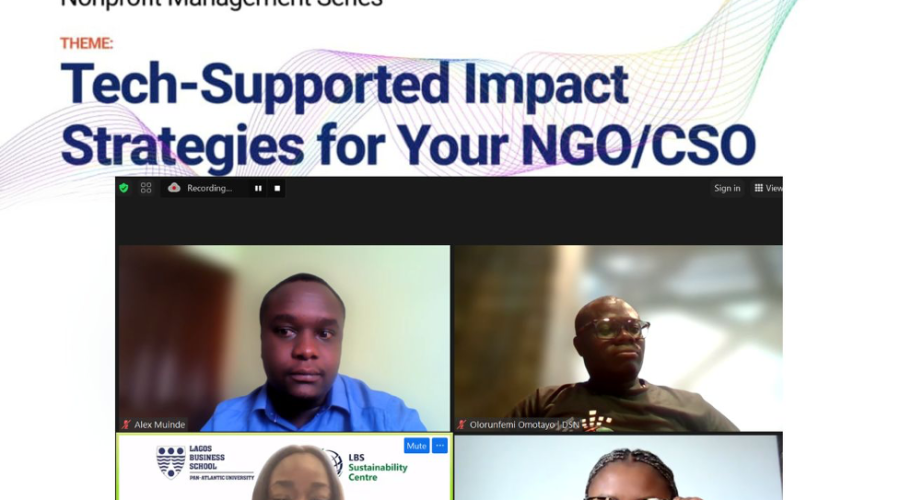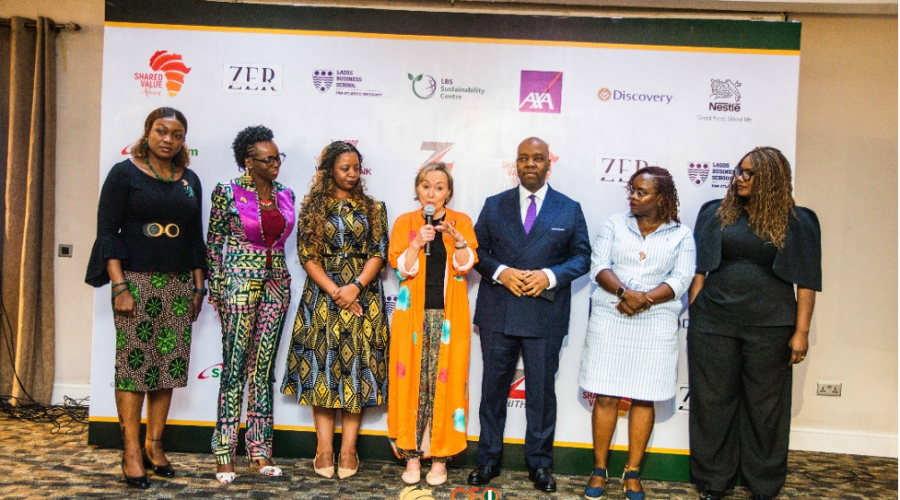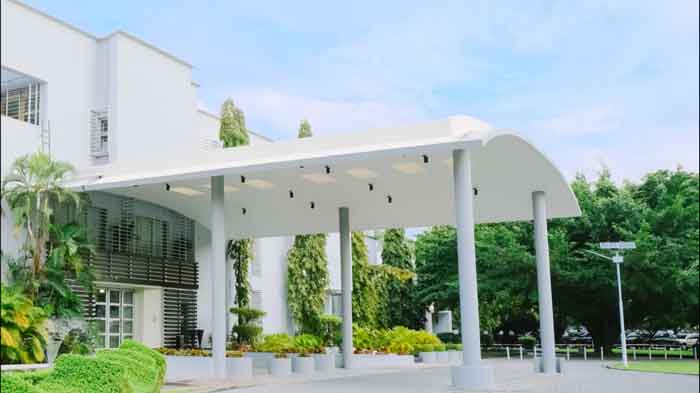The Global Alarm
Scientists across the globe are raising alarm over the increased waste production in urban cities which is fueling climate change, and slowing speedy transition into the circular economy model. As currently practised in many cities across the globe, waste generated is unsegregated at source and this increases land, air, water pollution and ocean plastic accumulation, shrinks biodiversity and carbon sink, contaminates non-renewable resources, depletes the environment, spikes cost of waste management, and inflates the cost of waste processing, among others. This has led to a call for a more efficient, sustainable, and cost-effective model of waste management across the value chain starting with at-source segregation of wastes.
In its Global Snapshot on Waste Report in 2018, the World Bank clearly stated that unless action is taken, the current level of global waste will rise by 70 percent in the year 2050, driven mainly by growing populations, rapid urbanisation and increasing industrialisation. It projects a jump in waste generation from 2.01 billion tonnes to 3.4 billion tonnes by 2050. The report further breaks down the contribution of waste produced across the globe.
| Source: All charts are culled from What a Waste 2.0 by Kaza et.al | |
High-income countries combined generate more than one-third (34 percent) of the world’s waste, even though they only make for 16 percent of the world’s population, and the East Asia and Pacific region churn in close to a quarter (23 percent) of all waste. It is expected that by 2050, waste generation in Sub-Saharan Africa will more than triple from existing levels, while South Asia will more than double its waste stream. What is worse as indicated by I.Marín-Beltrán et.al (2022) is the outright global mismanagement of resources leading to waste on an annual basis, with studies implying we directly waste or mismanage around 49% of food produced, 78% of total water withdrawn, 31% of the energy produced, 85% of ores and 26% of non-metallic minerals extracted, respectively.
D.M.Chen et.al (2020) have put forward their findings highlighting that global waste production at current levels does not seem to follow the environmental Kuznets curve, and current projections do not meet UN SDGs for waste reduction. Their study shows that a continuation of current trends and improvements is insufficient to reduce pressures on natural systems to achieve a circular economy. These findings, reports and studies have all constituted a global alarm and an urgent call to action for the implementation of waste management practices that reverse climate change effects, conserve financial resources, regenerate our environment and minimise social conflicts.
Business As Usual
Laura Tuck, Vice President for Sustainable Development, World Bank in the Global World Bank Waste Report of 2018 says mismanagement of waste harms human health, local environments and adds to the climate challenge, with often the poorest in society most adversely impacted. She advocates for reuse and recycling as the way to go. Her colleague, Silpa Kaza, World Bank Urban Development Specialist and Lead Author of the report reckons that it makes economic sense to properly manage waste, further stressing the health and environmental impacts uncollected waste has across ecosystems. She says, “The cost of addressing these impacts is many times higher than the cost of developing and operating simple, adequate waste management systems. Solutions exist and we can help countries get there.”
It is common knowledge that landfills are overflowing in major African cities leading to increased greenhouse emissions. These landfills pose even greater risks; more than two-thirds of the 130-plus people killed in recent landfill collapse in Africa were women according to the United Nations Environment Programme (UNEP). This is because waste management in Africa has largely ignored gender disparities. Africa has also become a dumping ground for end-of-life goods, such as electronic waste, often originating from developed countries. Recycling and treatment infrastructure is typically inadequate to safely deal with these waste streams resulting in direct impacts on the environment and human health.
The United States Environmental Protection Agency (USEPA) in its Pollution Prevention Article (2022) states that every business concern generates waste, requiring special handling and disposal and irrespective of the volume or nature of waste originating from businesses or homes, they are all similar in one respect – it is costing individuals and organisations money. In Fact, they opine that individuals and businesses pay for waste twice – once when it is bought and the second time when it is thrown away. They submit that preventing waste will save individuals’ and organisations resources. Waste prevention is a business and income-saving strategy beneficial to all organisations and homes, regardless of size or type. In addition to cost savings, it also helps to reduce liability, improve worker safety, and enhance social inclusion.
According to USEPA, by consuming and throwing away less, the need to handle, treat, and dispose of waste is significantly reduced. It is worthy of note that preventing waste can happen in many ways, including:
- Using eco-friendly packaging products and reducing the amount of packaging material.
- Purchasing durable, long-lasting materials.
- Eliminating raw materials that are not needed in your final product or service.
- Using products that are free of toxic materials
- Conserving water and energy and
- Implementing in-process recycling
Also, paper and plastics constitute a major component of solid waste across the globe. While we see increasing efforts to recycle paper waste across the globe, plastic pollution across natural habitats has reached a peak. I. Anyaogu (Business Day, 2022) has hinted that failure to formalise the Nigerian waste recycling sector deprives the country of value from an estimated 32 million tonnes of waste generated yearly, complicating an already aggravated environmental pollution. He further added that, according to a United Nations Industrial Development Organisation (UNIDO) report, out of the 32 million tonnes of waste generated annually in Nigeria, plastics account for 2.5 million tonnes, infamously placing Nigeria among the 20 nations that contribute 83 percent of the total volume of land-based plastic waste that makes it into the oceans.
To put it in context, over 200,000 tonnes of plastics from Nigeria end up in the Atlantic Ocean. A World Bank report estimates that 0.51 kilogrammes of waste is generated daily by each Nigerian, and projected total waste of all Nigerians is expected to rise to 107 million tonnes by 2050 – a development that presents both a threat and an opportunity. Last year, in 2022 precisely, the international non-profit Clean-Up Nigeria, with consultative status with the United Nations, found that over 172.7 million (86.35% of) Nigerians live in an environment considered unclean by global environment standards, putting them at risk of various types of diseases.
The Opportunity in Sustainable Waste Management
The United Nations Environment Programme (UNEP) in its Africa Waste Management Outlook Summary for Decision Makers paints a crystal clear picture of the challenges and opportunities in Africa. Out of the 125 million tonnes of municipal solid waste (MSW) generated on the continent in 2012 (which is expected to double in 2025), only 55% is collected owing to inadequate waste collection services. Over 90% is disposed of at uncontrolled waste sites and landfills, 19 of the world’s biggest 50 dumpsites are located in Africa. 57% of MSW is organic waste, 13% is plastic, 70-80% is recyclable, yet only 4% is currently recycled. The Africa Union (AU) set an ambitious target that African cities will recycle 50% of waste generated by 2023, a target still far from being met.
UNEP also submits that diverting waste away from dumpsites and landfills towards reuse, recycling and recovery, could inject an additional US$8 billion US dollars every year into the African economy, and create significant socio-economic opportunities for the continent. Achieving this economic prospect implies that secondary resources could be released back into the African economy, growing and strengthening local manufacturing, creating jobs, addressing unemployment, and building local and regional economies. And if done responsibly and sustainably, will at the same time minimise the environmental and human health impacts associated with the current poor solid waste management practices seen across the African continent.
The Netherlands is a global frontrunner in waste management and circular economy (CE). In the 2020 (Netherlands) Report on Business Opportunities in Nigeria’s Waste and Circular Economy, commissioned by the Netherlands Enterprise Agency, they identified that for Nigeria to move forward, a more formal circular ecosystem needs to emerge. The Nigerian public and private sectors are increasingly aware of the concept of circularity in the economy, and there are ever more projects and companies involved to come up with solutions. Solutions proposed at various fora by stakeholders in the waste management space include at-source segregation which helps conserve resources, enhance sustainable waste management practices, and fastracks the attainment of circularity principles.
The Economic, Social and Environmental (ESG) Case for Source Segregation
At the recently concluded True Leaders Training Series which held on May 3, 2023 for Facility Managers, conducted by the Lagos Business School Sustainability Centre (LBSSC) in partnership with the Circular Business Platform, an initiative supported by the Netherlands Enterprise Agency, the Managing Director (MD) of Lagos Waste Management Authority (LAWMA), Mr. Ibrahim Odumboni, who was a guest speaker informed participants that at-source segregation has been proven to conserve significant financial resources for businesses, individuals and homes and advocates for widespread adoption of at-source segregation.
In segregating waste for easier recycling and waste management, businesses and individuals must split waste at source into 6 segregation levels, i.e. (i) Dry waste including paper, glass, rubber, etc – these are mostly combustibles (ii) Wet waste – includes liquid waste, organic items like food, fruits, leaves and flowers, soiled food wrappers, hygiene products, yard waste, tissues and paper towels, as well as any other soiled item that would contaminate the recyclables (iii) Domestic hazardous waste such as motor batteries, paints, solvents, pesticides, compressed gas tanks, car wax, diesel fuel, metals, etc (iv) Domestic Biomedical waste such as used masks, gloves, sanitary napkins, diaper, waste medicines etc. (v) E-Wastes such as TVs, computers, phones, radios, DVDs, lamps, clocks, flashlights, calculators, etc and (vi) Plastic Waste.
Interestingly the UNDP India Office has proffered 16 ways of segregating waste for those who want to segregate to even more granular and precise levels. They have stated benefits to include reduction in occupational health risks of waste pickers who segregate waste at collection points, elimination in the need for landfills which constitute a huge hazard to human health and the environment, and increase in revenues for households and businesses who sell recyclable waste after at-source segregation to the waste collectors who in turn recycle dry waste and sell to cement factories as Refuse Derived Fuel (RDF) for co-processing and in some cases for usage in running their production machinery.
In 2021, the Ghana Environmental Protection Agency (EPA) relaunched the Source Segregation Program, which calls for waste to be segregated into pre-defined groups namely: Organics, paper, plastic, can and glass waste for recycling. The relaunch was necessitated by the loss of momentum in its first launch In November 2013, when the EPA piloted the National Source Waste Segregation program in public sector organisations and Ministries involving 60 Institutions. Only recently in March 2023, the African Business Quarterly indicated that the South African military launched a separation-at-source recycling initiative to transit its waste-to-wealth ambition into the circular economy which will reduce landfills and protect the environment. The initiative is a direct brainchild of the South African Military Health Service (SAMHS) in partnership with PETCO which is a Producer Responsibility Organisation (PRO) that administers extended producer responsibility (EPR) schemes on behalf of its members for various packaging material streams in order to build a circular economy and lead producer responsibility in South Africa.
Waste segregation facilitates the process of reuse, recycling, and recovery of waste, which creates a huge window for circularity. Circularity, as espoused by global climate change experts, researchers and policymakers, holds huge economic opportunities for Africa as well as great potential to regenerate the environment. Circularity is underpinned by the 3 concepts of Reduce, Reuse and Recycle. According to J.Kihila et.al (2021), waste reuse, recycling and recovery (RRR), if well planned and managed, can reduce the amount of waste to be disposed of by up to 65% of the total waste generated, leading to economic and environmental benefits.
Chalkboard Examples Worth Following
In Nigeria, companies like FBN holdings, MTN, and BUA Foods have resource use and sustainable waste management policies in place. Lagos Free Zone (LFZ) has a material recovery facility for sustainable waste management. These policies influence practices that include waste segregation, recycling, upcycling, waste minimisation and composting. Its also reported that firms in Nigeria are increasingly interested in recycling by promoting plastic collection at their premises. These include the United Africa Company (UAC), First City Monument Bank (FCMB) and Nigerian Exchange Group (NSE).
S.Wahba et.al (2019) in their article on realising economic growth while cutting waste, highlighted the case of Kitakyushu, a high-income city in Japan and what we can learn from them. As an industrial city with significant pollution, Kitakyushu sought to apply an environmentally sound approach rather than a disposal-focused one. The main drivers of their efficient waste management system cover all steps from the start to end points: sorting of the waste at source, composting widely at the household level, recycling, and engaging citizens heavily. These measures are complemented with financial incentives to reduce waste due to volume-based waste user fees rather than flat fees per household. Over time, Kitakyushu even built up an Eco-Town to increase environmental awareness and recover materials from many types of waste, including cars and appliances.
Lessons from Kitakyushu and Japan come in handy for Africa and the rest of the world to work towards reducing and managing waste effectively. Citizen awareness, engagement and participation made all the difference in Kitakyushu. Impressive commitment ran through from household levels to the government at all levels, with incentives aligned at all levels by all stakeholders, allowing for transformation of the waste management sector, which led to significant improvement of the environment, the economy, and the health of the city. Inevitably, from the Kitakyushu success story, there exists a nexus between at-source segregation, sustainable waste management and increased economic growth.
Back home in Africa, only Rwanda has come up with a circular economy plan as reported by C.Hitayezu (2023). It is a 14-year plan costing $211.2 million US dollars to manage waste and adopt clean production technologies, which will essentially adopt at-source segregation as part of its waste management practices. Africa’s future economic growth and the prosperity of its people are intimately linked to a successful transition to a green and resilient economy, African Development Bank’s Rwanda Country Manager Aissa Touré Sarr has said. In her words, “Investment in companies and ecosystems working on circular economy solutions has an opportunity to drive whole-of-society transformation and innovations.”
Furthermore, Hitayezu reported that the Africa Circular Economy Alliance was established in 2017 during the 23rd Conference of Parties to the United Nations Framework Convention on Climate Change held at Bonn, Germany by the governments of South Africa, Nigeria and Rwanda. It aimed at encouraging Africa’s transition to a circular economy at the national, regional and continental levels by operating as a collaborative platform to coordinate and link the various initiatives on the continent. Among the three countries, Rwanda is the only one that has developed a Circular Economy Action Plan and Roadmap.
Overall, at-source waste management practices that improve current waste generation dynamics and prompts a compelling response from policymakers in Nigeria and Africa are needed. It is instructive to note that policy is catching up with these sustainability trends through the circular economy and its enormous economic opportunities. The Nigerian bustling commercial city of Lagos has announced October 1st, 2023 as the deadline for implementation of at-source segregation of wastes at commercial premises operating in the state.
Finally, we would conclude by emphasising the importance of the Circular Economy lens, innovation and creativity in the practice of sustainable waste management. In our recent study published in a chapter in the forthcoming Routledge Handbook of Catalysts for a Sustainable Circular Economy, we found that businesses “that successfully implemented circular business models demonstrated a high level of creativity and innovation in their approach. They were able to identify untapped resources, develop new products and services, and engage in collaborative partnerships to enhance their business models.” N. Ferronato and V. Toretta (2019) have opined that solid waste (SW) mismanagement is a global issue in terms of environmental contamination, and economic sustainability, which requires carefully thought out practices, integrated assessments and holistic approaches for its solution. Achieving both economic growth and sustainable development in waste management starts with best practices in the waste value chain such as at-source segregation, which helps to reduce global ecological footprint, as well as change the way of produce-consume-waste of goods and resources.
Contributors
- Orevaoghene I. Atanya, Head, Sustainability, Lagos Business School
- Abam Inyang, Senior Associate, LBS Sustainability Centre
References
Agbesola, Y. O. (2013). Sustainability of Municipal Solid Waste Management in Nigeria: A Case Study of Lagos. https://liu.diva-portal.org/smash/get/diva2:644961/FULLTEXT01.pdf
Akanji, M., Amoah, N., Akpoveso, O.T., Atanya, O. and Ogbechie, C. (2023) A review of circular economy in Nigeria: From rhetoric to enterprise development. In Jokinen, A. Lehtimäki, H., Aarikka-Stenroos, L., Jokinen, P., Eds The Routledge Handbook of Catalysts for a Sustainable Circular Economy. United Kingdom: Taylor & Francis, 2023.
Anyaogu, I. (2022, March 31). Nigeria’s 32m-ton annual solid waste ripe for investments. Businessday NG. https://businessday.ng/big-read/article/nigerias-32m-ton-annual-solid-waste-ripe-for-investments/
Ashley. (2023, April 14). SA military launches separation-at-source recycling initiative. AFRICAN BUSINESS QUARTERLY. https://www.abizq.co.za/sa-military-launches-separation-at-source-recycling-initiative/
Chen, D. M.-C., Bodirsky, B. L., Krueger, T., Mishra, A., & Popp, A. (2020, June 23). The World’s Growing Municipal Solid Waste: Trends and Impacts. Environmental Research Letters. https://iopscience.iop.org/article/10.1088/1748-9326/ab8659
Ferronato, N., & Torretta, V. (2019, March 24). Waste mismanagement in developing countries: A Review of Global Issues. MDPI. https://www.mdpi.com/1660-4601/16/6/1060
GGGI. (2021, August 30). Rwanda launches new project “waste to resources: Improving municipal solid waste (MSW) and Hazardous Waste Management in Rwanda.” GGGI. https://gggi.org/rwanda-launches-new-project-waste-to-resources-improving-municipal-solid-waste-msw-and-hazardous-waste-management-in-rwanda/
Hitayezu, C. (2023, January 9). Rwanda launches plan for next 14 years with focus on circular economy. Down To Earth. https://www.downtoearth.org.in/blog/africa/rwanda-launches-plan-for-next-14-years-with-focus-on-circular-economy-87021
Kaza, S., Yao, L. C., Bhada-Tata, P., & Van Woerden, F. (2018). What a waste 2.0. Open Knowledge Repository. https://openknowledge.worldbank.org/entities/publication/d3f9d45e-115f-559b-b14f-28552410e90a
Kenya Launches Plastic Action Plan to promote green growth agenda. Xinhua | English.news.cn. (2019, December 4). http://www.news.cn/english/africa/2019-12/04/c_138605895.htm
Kihila, J. M., Wernsted, K., & Kaseva, M. (2021, July 14). Full article: Waste segregation and potential for recycling -a case … Taylor and Francis Online . https://www.tandfonline.com/doi/full/10.1080/27658511.2021.1935532
Marín-Beltrán , I., Demaria, F., Ofelio, C., Serra, L. M., Turiel, A., Ripple, W. J., Mukul, S. A., & Costa, M. C. (2022, March 10). Scientists’ warning against the Society of Waste. Science of The Total Environment. https://www.sciencedirect.com/science/article/pii/S0048969721064378
Naijalink Limited. (2020, December). Business opportunities in Nigeria’s waste and circular economy sector. RVO. https://www.rvo.nl/sites/default/files/2021/03/Business-Opportunities-in-Nigerias-Circular.pdf
Nyarko-Yirenkyi, A. (2021, December 1). Ghana: EPA re-launches source segregation programme. allAfrica.com. https://allafrica.com/stories/202112010154.html
Smith, A., Brown, K., Ogilvie, S., Rushton, K., & Bates, J. (n.d.). Waste Management Options and Climate Change. https://ec.europa.eu/environment/pdf/waste/studies/climate_change.pdf
UNDP India. (2023, January 18). 16-ways of segregating waste: Panaji’s innovative model of Solid Waste Management: United Nations Development Programme. UNDP. https://www.undp.org/india/stories/16-ways-segregating-waste-panajis-innovative-model-solid-waste-management
United Nations. (n.d.). Waste Management – United Nations Environment Programme. https://wedocs.unep.org/bitstream/handle/20.500.11822/25514/Africa_WMO.pdf?sequence=1
United States Environmental Protection Agency. (2022, October 12). Why Should You Care About Preventing Waste? Small Business Guide. EPA. https://www.epa.gov/p2/why-should-you-care-about-preventing-waste-small-business-guide
WAHBA, S., KAZA , S., & IONKOVA, K. M. (2019, November 12). A new phenomenon – realizing economic growth while cutting waste. how?. World Bank Blogs. https://blogs.worldbank.org/sustainablecities/new-phenomenon-realizing-economic-growth-while-cutting-waste-how
Wanjiku, R. (2008, August 7). Kenya opens first e-waste Management Plant. Network World. https://www.networkworld.com/article/2274615/kenya-opens-first-e-waste-management-plant.html
World Bank Group. (2018, September 24). Global waste to grow by 70 percent by 2050 unless urgent action is taken: World Bank Report. World Bank. https://www.worldbank.org/en/news/press-release/2018/09/20/global-waste-to-grow-by-70-percent-by-2050-unless-urgent-action-is-taken-world-bank-report






